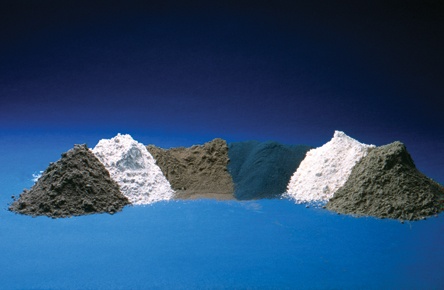Earlier this year, the National Institute of Standards and Technology (NIST) published an approach to replacing not only cement powder, but also cement paste consisting of the cement and water, with appropriately sized limestone powders. The intent is to lessen the high energy and carbon dioxide footprints of cement production by reducing the cement content of concrete.
WHAT ARE SUPPLEMENTARY CEMENTITOUS MATERIALS?
Supplementary cementitious materials (SCMs) are coarse or fine aggregates that are used as a partial replacement for cement in concrete mixtures,
according to BCC Research analyst Tanmay Joshi.
“Concrete is the primary material for building of roads, bridges, dams, highways and other infrastructure,” Joshi explains. “However, concrete has several drawbacks such as short life and heat emission, which can harm the environment. The incorporation of SCMs in concrete improves its microstructure and increases resistance to environment hazards.”
The most-used SCMs are fly ash, ground granulated blast-furnace slag and silica fumes. After addition of SCMs, concrete exhibits lower permeability, increased durability and more resistance to sulfates and seawater, she adds.
The main application areas of SCMs are cement and concrete. The current trend is to use various SCMs according to their inherent chemical properties and to the eventual purpose of the resulting concrete. SCM-reinforced concrete and cement are used primarily in infrastructure.
PERFORMANCE CHARACTERISICS OF SCM
The performance of SCMs is related to what proportion they are used and the performance characteristic required in the concrete. Producers are focused on cost reduction and benefits of obtaining cements and concretes with a higher resistance, as addition of SCMs increases the strength of cement.
The researchers of Technical Note 1906 noted that “studies in paste, mortar, and concrete have all confirmed the high potential for replacing a significant fraction of the cement paste in these materials with a fine limestone powder to produce more sustainable high volume limestone powder (HVLP) mixtures with equivalent or even superior performance.”
Their approach replaced cement paste (cement powder and water) with appropriately graded limestone powder, as opposed to just replacing the cement powder. Centimeter-sized coarse and millimeter-sized fin aggregates occupied between 65% and 75% of the volume of a concrete structure to include micro-aggregates in the 1- to 100-micrometer size range.
Demonstration paste, mortar and concrete mixtures—all of 0.40 or higher water-cement ratio—were each formulated with limestone powder replacement for a significant portion of their cement paste component, achieving the cement reductions upward of 30 percent, as
reported by Concrete News.
Joshi estimates the global supplementary cementitious material (SCM) market to reach more than $103.2 billion by 2020, increasing at a compound annual growth rate (CAGR) of 5.4% from 2015 through 2020.




